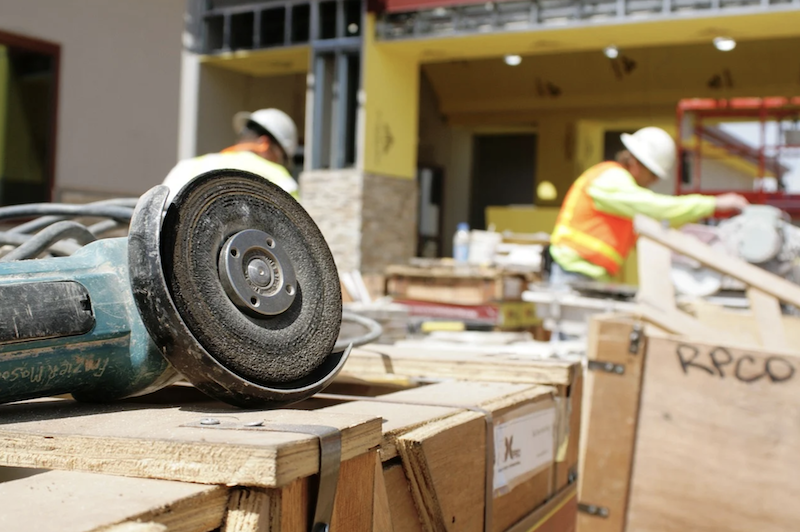Total construction spending ticked up from June to July, as gains in residential and public construction offset a dip in private nonresidential projects, according to a new analysis of federal construction spending data the Associated General Contractors of America released today. Officials noted, however, that challenges remain for the industry, particularly because of continuing problems with coronavirus flare-ups and supply-chain disruptions.
“Although nonresidential construction is no longer in free fall, many categories face continuing challenges,” said Ken Simonson, the association’s chief economist. “The rapid spread of the delta variant of COVID-19 is causing a pullback in re-openings and travel that may lead some owners to postpone new projects. Meanwhile, materials price increases, limited supplies of key materials, and long or uncertain delivery times are impeding the industry’s recovery.”
Construction spending in July totaled $1.57 trillion at a seasonally adjusted annual rate, an increase of 0.3% from June, and 9.0% higher than the pandemic-depressed rate in July 2020. Once again, residential construction saw monthly and year-over-year gains, while nonresidential construction spending posted mixed results. The residential construction segment climbed 0.5% for the month and 26.5% year-over-year. Combined private and public nonresidential construction spending inched up 0.1% compared to June but declined 4.2% compared to July 2020.
Private nonresidential construction spending fell 0.2% from June to July and 3.6% since July 2020. The largest private nonresidential category, power construction, decreased by 0.7% from June to July and 0.9% year-over-year. Among the other large private nonresidential project types, commercial construction—comprising retail, warehouse and farm structures—was essentially unchanged for the second month in a row but higher than in July 2020 by 4.6%. Manufacturing construction spending was also nearly unchanged for the month and up 1.8% from a year earlier. Office construction decreased 0.1% compared to June and 6.1% year-over-year.
Public construction spending increased 0.7% for the month but was 5.1% lower year-over-year. Among the largest segments, highway and street construction gained 1.9% compared to June but dipped 0.1% over 12 months. Public educational construction fell 0.5% in July and 6.4% year-over-year. Spending on transportation facilities was up 0.3% from June but fell 4.2% from July 2020.
Association officials said the spending figures highlight some of the challenges the industry is facing amid a resurgent coronavirus and ongoing supply chain problems. They added that the association will release more details on how demand for new projects and workforce supply are being impacted by the coronavirus during a virtual media event at noon on Thursday, September 2nd with Autodesk.
“We are starting to get a more complete picture of how the resurgent coronavirus and policy responses to it are impacting the construction industry,” said Stephen E. Sandherr, the association’s chief executive officer. “The industry will not be out of the woods without new federal infrastructure investments and support for workforce development.”
Related Stories
Designers | Sep 13, 2016
5 trends propelling a new era of food halls
Food halls have not only become an economical solution for restauranteurs and chefs experiencing skyrocketing retail prices and rents in large cities, but they also tap into our increased interest in gourmet locally sourced food, writes Gensler's Toshi Kasai.
Building Team | Sep 6, 2016
Letting your resource take center stage: A guide to thoughtful site selection for interpretive centers
Thoughtful site selection is never about one factor, but rather a confluence of several components that ultimately present trade-offs for the owner.
Market Data | Sep 2, 2016
Nonresidential spending inches lower in July while June data is upwardly revised to eight-year record
Nonresidential construction spending has been suppressed over the last year or so with the primary factor being the lack of momentum in public spending.
Industry Research | Sep 1, 2016
CannonDesign releases infographic to better help universities obtain more R&D funding
CannonDesign releases infographic to better help universities obtain more R&D funding.
Industry Research | Aug 25, 2016
Building bonds: The role of 'trusted advisor' is earned not acquired
A trusted advisor acts as a guiding partner over the full course of a professional relationship.
Multifamily Housing | Aug 17, 2016
A new research platform launches for a data-deprived multifamily sector
The list of leading developers, owners, and property managers that are funding the NMHC Research Foundation speaks to the information gap it hopes to fill.
Hotel Facilities | Aug 17, 2016
Hotel construction continues to flourish in major cities
But concerns about overbuilding persist.
Market Data | Aug 16, 2016
Leading economists predict construction industry growth through 2017
The Chief Economists for ABC, AIA, and NAHB all see the construction industry continuing to expand over the next year and a half.
Multifamily Housing | Aug 12, 2016
Apartment completions in largest metros on pace to increase by 50% in 2016
Texas is leading this multifamily construction boom, according to latest RENTCafé estimates.
Market Data | Jul 29, 2016
ABC: Output expands, but nonresidential fixed investment falters
Nonresidential fixed investment fell for a third consecutive quarter, as indicated by Bureau of Economic Analysis data.

















